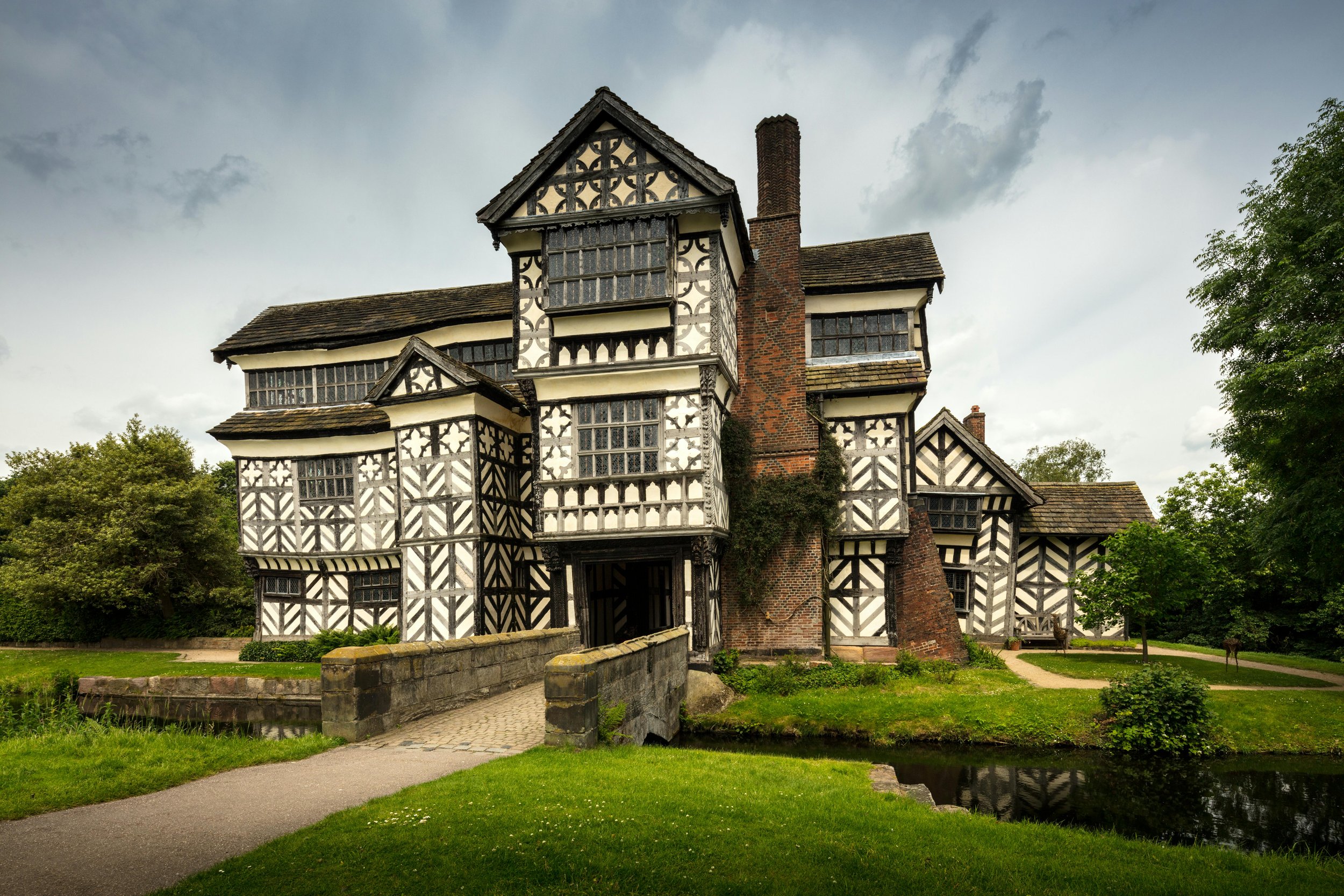Can Heat Pumps Be Installed in Older Buildings?
According to Historic England, there are 370,000 entries for listed buildings on the National Heritage List for England (NHLE). In a country steeped in history, our streets are lined with everything from Georgian townhouses and Victorian terraces to black-and-white Tudor homes, each brimming with character. But while their beauty is widely admired, their energy efficiency often leaves much to be desired. So, heat pumps in historic buildings – do they mix?
The short answer is yes, and at FJM, we've demonstrated this with great success. While it's not necessarily more complicated, there are additional factors to consider.
Photo by Michael D Beckwith: https://www.pexels.com/photo/historic-timber-framed-mansion-in-cheshire-england-31428020/
Suitability of Older Buildings for Air-Source Heat Pumps
From a listed building perspective – and depending on the grade of listing – heat pump systems may require planning permission and listed building consent, depending on the specifics of the heat pump installation.
There may also be tighter restrictions, such as:
Where the heat pump can be placed
What physical size is permitted
How pipework can be routed without altering protected parts of the building
What types of radiators are allowed.
Provided the installation is carried out in line with regulations and with due sensitivity to the building's heritage, most local planning authorities (LPAs) are broadly supportive of renewable technologies like heat pumps, recognising the need for listed and period properties to reduce their energy bills and carbon footprint.
That’s not to say every listed building will be approved for heat pump installation. There are cases where LPAs insist on preserving original fixtures and fittings without alteration. However, these instances are rare, and we've not encountered one to date.
Challenges and Considerations
When it comes to older buildings – and we've installed heat pumps in properties dating back to the 17th and 18th centuries – the process can be slightly more involved. The key challenges lie in carrying out accurate heat loss calculations and working closely with you to maximise building insulation levels as far as regulations allow.
When we carry out a heat loss survey, we assess key features such as the construction of the walls (both internal and external), windows and roof. Using this data, we produce a detailed report, which we share with you. We then explain how the figures were calculated and help you understand what they mean in practical terms.
From there, it's straightforward to identify opportunities to improve building insulation – whether that's an insulation retrofit in the loft, exploring cavity, internal and external wall insulation, or considering secondary glazing where appropriate for a period property.
How Insulation Upgrades Can Cut Costs and Downsize Your Heat Pump
Of course, there's an initial outlay to consider when upgrading insulation, but most customers are very receptive to our advice – especially as we can simulate any changes within the heat loss report and clearly show the potential cost and energy savings. In most cases, those who follow our recommendations to improve building insulation can install a smaller heat pump as a result.
This brings several benefits, including lower running costs and reduced installation expenses. In fact, it can sometimes cut upfront costs by hundreds of pounds – leaving a bit more in the piggy bank for those cast iron radiators (subject to approval for some projects, of course).
With the heat loss data in hand and clear advice provided, our process remains consistently efficient. Radiator sizes are specially selected to suit each space and set to the intended water temperature to ensure maximum efficiency. We install the appropriately sized heat pump and pipework to meet the building's heating demands. Although older buildings often have higher needs than modern ones of comparable sizes, this doesn't prevent us from reducing both heating expenses and the building's carbon footprint.
FJM radiator install
Plain-Speaking & Building Trust
At FJM, our ethos is simple: if we can't at least match or lower your current household heating energy prices with a heat pump, we'll be upfront about it.
In some cases, another heating system may be more suitable in terms of running costs – and we won't hesitate to say so. While there are occasional situations where heat pump technology may not perform to the energy efficiency levels we’d like, many of the concerns we hear are rooted in common myths about heat pumps. We’re always committed to working closely with you to find the best solution for your home's heating demands.
Thinking about upgrading your period property with a heat pump? Get in touch with FJM, we're always happy to give honest, expert advice tailored to your building.




